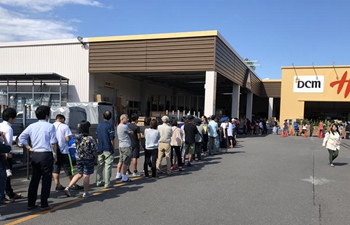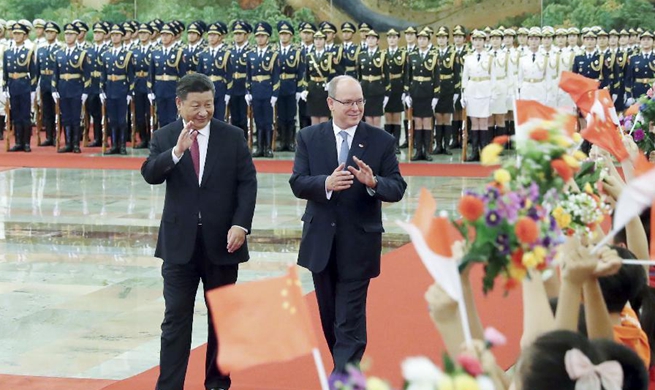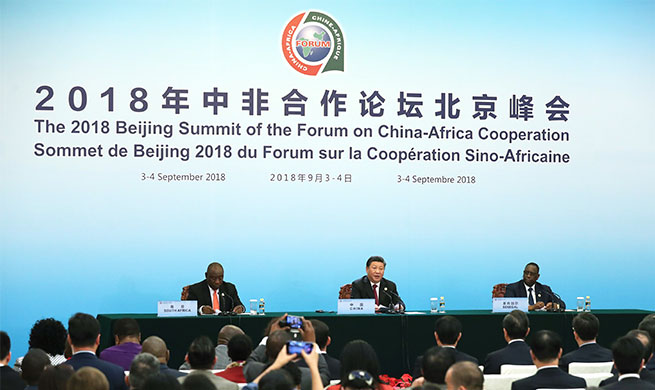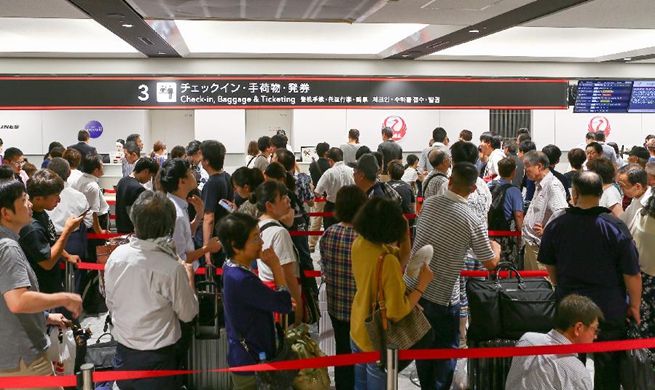MANILA, Sept. 7 (Xinhua) -- The Philippine central bank said on Friday it will reactivate a dollar hedging mechanism Currency Risk Protection Program (CRPP) in an apparent move to cushion the peso's drop.
First introduced in December 1997 during the East Asian financial crisis, the Bangko Sentral ng Pilipinas (BSP) said the CRPP is a non-deliverable forward hedging facility which is aimed at alleviating demand pressures in the foreign exchange spot market from borrowers seeking to hedge their future foreign exchange exposures.
Under the facility, parties agree that, on maturity of the forward contract, only the net difference between the contracted forward rate and the spot rate shall be settled in pesos.
The opening of the CRPP in December 1997 did much to return calm to the foreign exchange market in the following years.
"The BSP will make the CRPP available to eligible borrowers through the commercial banks," the BSP said in a statement.
On Friday, the peso fell to its lowest level in almost 13 years in intraday trading. The peso closed at 53.73 to the dollar from a high of of 53.975, BSP data said.
BSP Governor Nestor Espenilla said regulators will take "all actions necessary" against "speculative activity by market participants" who have pushed the currency lower in recent weeks.
Espenilla also said it will take "strong immediate action using the full range of instruments in its toolkit" in order to respond to the emerging threats to inflation and inflation expectations.
"The follow-through actions will also address other threats to higher inflation such as excessive exchange rate volatility not consistent with underlying macroeconomic fundamentals in order to ensure that inflation returns to its 2-4 percent target over the policy horizon," Espenilla said.
Headline inflation in the Philippines rose in August to 6.4 percent year-on-year, the highest level observed since April 2009, as supply and logistical issues continued to drive price pressures.
Finance Secretary Carlos Dominguez said he expects inflation to "moderate" in the months ahead following the implementation of a slew of measures to help tame the rise in commodity prices, which include streamlining import procedures for rice, fish and sugar to boost their supply in the domestic market.
With rice, fish, vegetables and meat among the highest contributors to the August inflation rate of 6.4 percent, Dominguez said "reforms in agriculture will continuously be implemented to address the supply issues causing the rise in food prices."
"A committed effort from government in the agriculture sector to boost supply of key products and introduce policy reforms will bring down prices for all Filipino families," Dominguez said, stressing that "supply issues" caused food prices to soar.
"We believe that when the measures take effect, the inflation rate increase will be moderated," Dominguez said.













